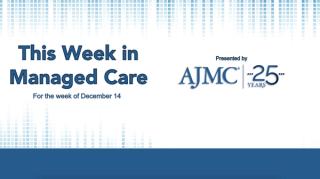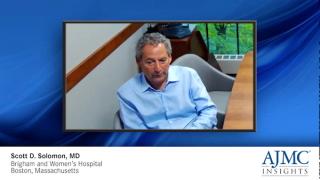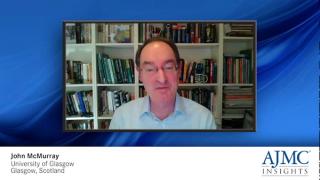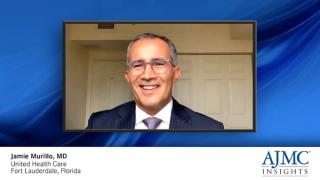
Heart Failure
Latest News

The Biden administration plans to expand Affordable Care Act (ACA) coverage to more families; new guidelines jointly announced by cardiology organizations for the treatment and prevention of heart failure; World Health Organization estimates that 99% of people worldwide are exposed to poor air quality.
Latest Videos

CME Content
More News

This systematic literature review reports incidence of adverse drug effects associated with guideline-directed medical therapy for patients with heart failure with reduced ejection fraction.

This new study investigated cardiovascular disease (CVD) risk outcomes among patients with a serious mental illness (SMI) attending primary care clinics that were part of HealthPartners and Park Nicollet in Minnesota and Wisconsin.

A new study of patients receiving care for acute heart failure at Rambam Health Care Campus in Haifa, Israel, investigated how their clinical outcomes might be affected by elevated lactate levels and primary acid-base disorders.

This new analysis of commercial and Medicare Advantage claims from all 50 states investigated utilization of and testing trends for coronary artery disease (CAD) among adults aged 18 and older presenting with new-onset heart failure.

A new study has investigated the influence of xanthine oxidase activity and mitochondrial DNA damage–associated molecular patterns on heart failure and cardiac remodeling among Black adults with resistant hypertension.

A new study from Japan has investigated possible associations between cognitive frailty and overall prognosis among elderly individuals who have heart failure.

This new study investigated the relationship between cardiac function and hemodynamics among individuals presenting with heart failure with preserved ejection fraction (HFpEF) and normal levels of N-terminal prohormone B-type natriuretic peptide (NT-proBNP).

This new subanalysis of data from the Rotterdam Study investigated life expectancy among women and men who live a healthy lifestyle and do or do not have heart failure.

This new investigation, a subanalysis of participant data from the Atherosclerosis Risk in Communities study, examined race- and gender-based differences of heart failure (HF) risk at an older age.

This new study from investigators at University of Calgary investigated the potential of midwall striae fibrosis to predict hospital admission for heart failure.

This new analysis of more than 11 million veterans investigated risks of several cardiovascular diseases beyond the first 30 days after COVID-19 infection.

This study from Italy investigated potential associations between heart failure and comorbid cancer and whether the existence of heart failure predisposed individuals with both to a higher risk of death.

There is a persistent lack of effective treatments for heart failure with preserved ejection fraction (HFpEF), so in this study, investigators examined the impact of an atrial shunt among patients with this disease subtype.

In this new study from China, the link between left ventricular (LV) structural changes and mortality following coronary artery bypass grafting (CABG) was investigated among a patient cohort with heart failure with reduce ejection fraction.

The US Preventive Services Task Force (USPSTF) had announced an update to its 2018 recommendation on screening for atrial fibrillation (AFib) for older adults.

These new study findings support a link between faster walking pace and reduced risk of developing heart failure and its subtypes.

This new short-term matched study from investigators at Children’s Hospital of Philadelphia investigated cardiac-related outcomes among pediatric patients presenting with COVID-19–related multisystem inflammatory syndrome.

The combined effects of obesity and malnutrition among individuals with heart failure were explored in this recent study from France, with the investigators noting that while malnutrition is a risk factor for adverse outcomes, obesity often confers a protective effect.

Following a review of trials that evaluated reduced sodium intake among patients with heart failure, investigators found no improvement to patient quality of life or their risks of mortality and hospital readmission.

Authors described recent therapeutic developments in heart failure with preserved ejection fraction (HFpEF) and proposed a conceptual framework for more targeted treatment.

Analysis results revealed racial and sex disparities among patients with hypertrophic cardiomyopathy who receive implantable cardioverter-defibrillator (ICD) devices.
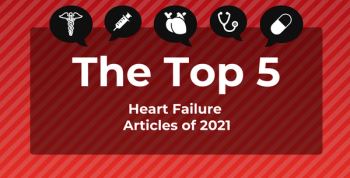
In 2021, there were some changes to recommendations and an important FDA approval for patients with heart failure or who are at risk of heart disease.

Adriaan Voors, MD, professor of cardiology and director of the Heart Failure Clinic, University Medical Center Groningen, the Netherlands, explains why patients provided sodium-glucose co-transporter 2 (SGLT2) inhibitors in hospitals may be unable to continue the medication after discharge.

Under the expanded FDA label, up to 1.8 million individuals in the United States could be eligible for sacubitril/valsartan, and up to 180,000 worsening heart failure (HF) events could be prevented or postponed.

Adriaan Voors, MD, University Medical Center Groningen, the Netherlands, discusses how and why sodium-glucose co-transporter 2 (SGLT2) inhibitors act so quickly for patients with heart failure.




